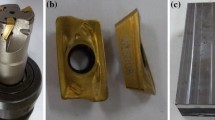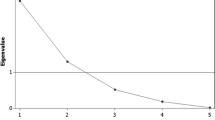Abstract
Optimizing multi-response problems has become an increasingly relevant issue when more than one correlated product quality characteristic must be assessed simultaneously in a complicated manufacturing process. This study proposes a novel optimization procedure for multiple responses based on Taguchi’s parameter design. The signal-to-noise (SN) ratio is initially used to assess the performance of each response. Principal component analysis (PCA) is then conducted on the SN values to obtain a set of uncorrelated components. The optimization direction for each component is determined based on the corresponding variation mode chart. Finally, the relative closeness to the ideal solution resulting from the technique for order preference by similarity to ideal solution (TOPSIS) is determined as an overall performance index (OPI) for multiple responses. Engineers can easily employ the proposed procedure to obtain the optimal factor/level combination for multiple responses. A case study involving optimization of the chemical-mechanical polishing of copper (Cu-CMP) thin films from an integrated circuit manufacturer in Taiwan is also presented to demonstrate the effectiveness of the proposed procedure.
Similar content being viewed by others
References
Ames AE, Mattucci N, Macdonald S, Szonyi G, Hawkins DM (1997) Quality loss functions for optimization across multiple response surfaces. J Qual Technol 29:339–346
Chang SI, Shivpuri R (1995) A multiple-objective decision-making approach for assessing simultaneous improvement in die life and casting quality in a die casting process. Qual Eng 7:371–383
Hu CK, Harper JME (1998) Copper interconnections and reliability. Mater Chem Phys 52:5–16
Elsayed EA, Chen A (1993) Optimal levels of process parameters for products with multiple characteristics. Int J Prod Res 31:1117–1132
Hotelling H (1933) Analysis of a complex of statistical variables into principal components. J Educ Psych 24:471–441, 498-520
Hwang CL, Yoon K (1981) Multiple Attribute Decision Making-Method and Applications, A State-of-the-Art Survey. Springer-Verlag, New York
Lakshminarayanan S, Steigerwald J, Price D, Chow TP, Gutmann RJ, Murarka SP (1995) CMOS devices and multilevel interconnections with dual damascene copper metallization. Proceddings of IEEE VMIC, pp337–339, June 27-29
Logothetis N, Haigh A (1988) Characterizing and optimizing multi-response processes by the Taguchi method. Qual Reliability Eng Int 4:159–169
Phadke MS (1989) Quality Engineering Using Robust Design. Prentice-Hall, NJ
Tong L-I, Su C-T (1997) Optimizing multi-response problems in the Taguchi method by fuzzy multiple attribute decision making. Qual Reliability Eng Int 13:25–34
Yang K (1996) Improving automotive dimensional quality by using principal component analysis. Qual Reliability Eng Int 12:401–409
Author information
Authors and Affiliations
Rights and permissions
About this article
Cite this article
Tong, LI., Wang, CH. & Chen, HC. Optimization of multiple responses using principal component analysis and technique for order preference by similarity to ideal solution. Int J Adv Manuf Technol 27, 407–414 (2005). https://doi.org/10.1007/s00170-004-2157-9
Received:
Accepted:
Published:
Issue Date:
DOI: https://doi.org/10.1007/s00170-004-2157-9




